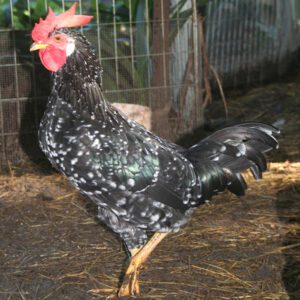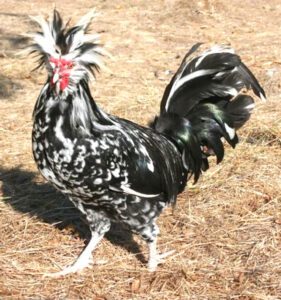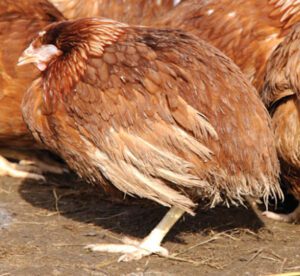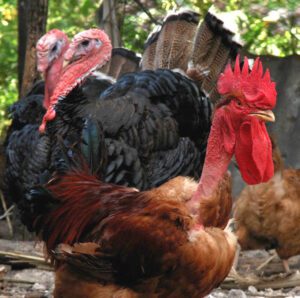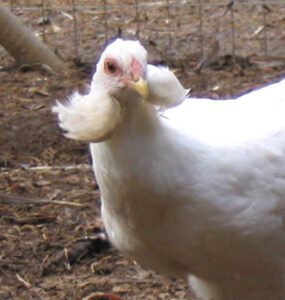Like all other poultry farming business, chicken farming also goes through some problems, and egg bound chicken one of them. It is a serious problem for your chicken and it can be life threatening for them. And such situation must be addressed quickly preferably by an experienced poultry veterinarian.
In egg bound chicken problem, a hen typically has an egg stuck inside her oviduct. And if the egg is not passed within 24 to 48 hours, then the hen is likely to die. So, try to keep good contact with a vet in your area and ask him/her in cage of emergency. However, read more information about egg bound chicken below.
What Is Egg Bound Chicken?
Egg binding is the situation when an egg gets stuck inside and a hen can’t pass it easily. Common signs of egg bound chicken are repeated efforts of the hen to lay eggs, or prolapse of part of the uterus through the vent. The situation is very dangerous and it is mostly caused by low calcium diets. Although egg binding is a less common situation.

Causes
There is no one single cause for egg bound chicken, and there are numerous reasons behind this health problem of chicken. Here we are trying to list the most common causes of egg binding.
Lack of Calcium: Lack of calcium in your chicken’s diet can lead to weak eggshells. And lack of calcium make it harder for the eggs to move through the reproductive tract.
Obesity: Overweight of the hens is also a cause of egg bound. Overweight hens may struggle with egg binding, because excess fat inside the hens body can interfere with the smooth passage of eggs.
Age: Generally young hens and the older hens are more susceptible to egg binding. They can experience this problem due to their reproductive system still adjusting or aging.
Genetic Factors: Genetic factors also play an important role in egg binding. Some chicken breeds are more predisposed to egg binding. So, knowing your chicken’s breed characteristics is essential.
Symptoms
Your chicken may express some signs that they might be egg bound. Here we are trying to list the most common signs of egg bound chicken.
Abnormal Posture: You may notice abnormal posture of your hens. You can notice an unusual stance with the tail raised and the wings slightly lowered. All these signs may suggest discomfort. A penguin-like walk can also suggest discomfort.
Reduced Activity: If your lively chicken becomes lethargic or appears uncomfortable suddenly, then it could be a sign of egg binding.
Frequent Nest Visits: Frequent visits to the nest without laying an egg or visible straining may indicate egg binding.
Changes in Vocalization: Listen for changes in your chicken’s usual sounds. Distressed clucking or vocalizations can be a sign of trouble.
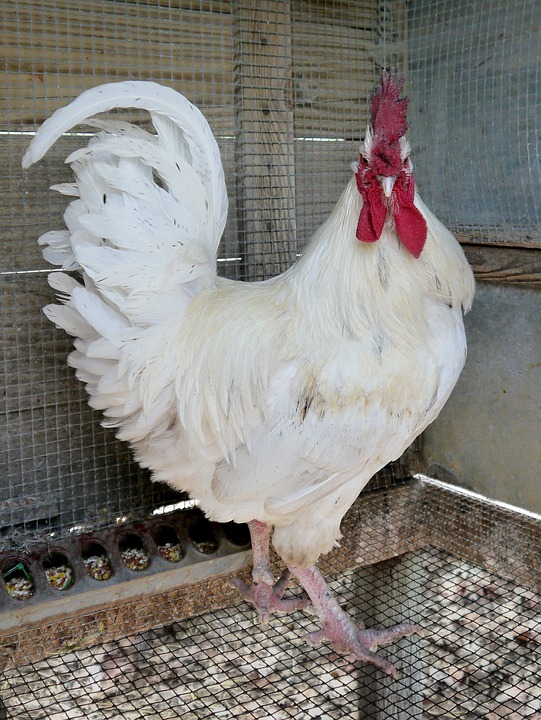
How To Tell If A Chicken Is Egg Bound?
Your hen will show several symptoms of egg binding. Here we are trying to list the most common symptoms. You need to take immediate action if you notice any of these symptoms.
- Frequent, uncharacteristic sitting
- Walking like penguin
- Loss of appetite
- Shaky wings
- Decreased activity
- Disinterest in drinking water
- Presence of an egg in the oviduct upon exam
- Droopy/depressed/pale comb and wattles
- Passing wet droppings or none at all
Treatment
First of all keep the hen in a separate area. And once the hen is settled in her quarantine area, then you should consider some egg bound chicken treatment options. Here we are trying to list some treatment options to help an egg bound chicken.
Non-invasive Option: Use warm water soaks and gentle massages to help the hen pass the egg on her own. A warm water bath should involve water that is about 75° to 80° F and a cup of Epsom salts. The warm water and salt combination will help to relax the hen’s muscles. Ensure that the water is deep enough, so that the hen’s vent is submerged in the water. Remember that, a warm water soak should last no longer than 15 to 30 minutes.
Then remove the hen from the water and gently dry her off with a soft towel. And then keep her in a warm location. You can repeat the warm water soaks in 1 hour increments if you see no signs of improvement. Along with this, you can also massage the eggs externally. And an external massage of the chicken would involve gently massaging the hen’s abdomen to help maneuver the egg into a proper position for laying.
Veterinarian Interventions: If anyhow the hen can’t pass the egg on her own, you can visit to the vet. A veterinarian can do an X-ray to confirm that the hen is egg bound. And the vet can administer calcium supplements in the proper dosage or use hormonal injections to encourage muscle contractions for the egg to be laid.
Manual or Surgical Intervention: In some cases surgical intervention will help to save the hen’s life. You can use a large-bore needle syringe to puncture the eggshell and then carefully syringe out the contents of the egg. And once the egg has been emptied, you can carefully break the eggshell by using a lubricated finger inserted gently into the hen’s vent. But remember, never try to break the egg externally by pressing on the hen’s abdomen.
Once the eggshell is collapsed, you can gently begin removing the eggshell. Use lots of warm saline water or soapy water to keep things lubricated and warm. Rinse away smaller fragments but make sure the water doesn’t wash small shards further into the cloaca. And don’t worry if there are a few small pieces of eggshells that you can’t get out. Those should hopefully be passed out when the hen defecates or lays her next egg (sometime, a hen can even pass a collapsed eggshell without assistance if given some time to relax).
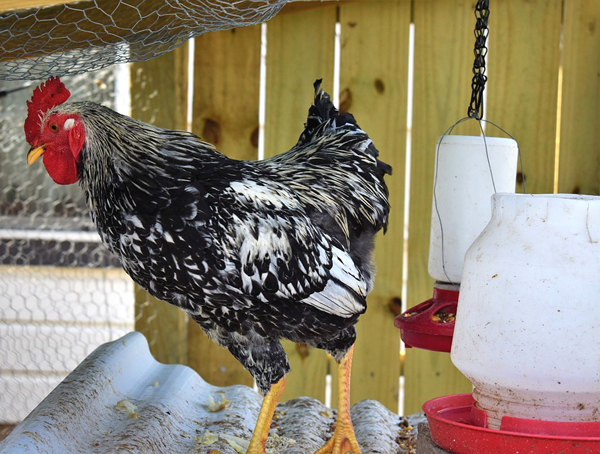
Prevention
You may have heard that, prevention is better than cure, and that’s true. Preventing egg binding in your flock is a great way to keep your hens healthy and to avoid serious conditions. Here we are trying to list some ways to prevent egg bound chicken.
Provide Nutritious Food: Always try to provide your chickens with enough nutritious food. Provide them a properly formulated layer feed, which is specially formulated for the laying hens. Ensure that the formulated food has proper nutrition and calcium in it.
Supplements: Ensure that your chickens have access to free-choice calcium supplements. In some cages, you can offer crushed eggshells to your hens as an economical calcium supplement. But the eggshells must be mixed with another source of calcium like crushed oyster shells.
Monitor Eggs Production and Size: Always monitor your hen’s egg production, and the size of the eggs. Young pullets need extended daylight hours which can cause them to start laying too soon. The nesting boxes inside the chicken coop should be dark and private. This will encourage the hens to lay inside the boxes. Try to supply one nesting box for every 4-5 hens so that the hens don’t have to wait in line or search for other nesting areas.
Perform Regular Health Checkups: Always try to perform regular health checkups and take necessary steps. Also keep good contact with a vet in your area, so that you can ask him/her in case of emergency. However, treating illness or parasites as soon possible can help to prevent damage to a hen’s reproductive system.
These are all we wanted to share with you. Hope this guide has helped you. Consider sharing it with your friends if you find it helpful. Good luck and may God bless you!
